I suspected that I had a ‘problem’ when I recently discovered that I had an abnormally large collection of Maggi Seasoning sauce. Are you familiar with the soy sauce-like condiment that practically has cult status among the Vietnamese? The French likely introduced the European wheat-based seasoning to Vietnam, where it became a part of our cuisine (it’s practically synonymous with banh mi) and a status symbol (if you can afford the pricey imported version, you are stylin’!).
Invented in the late 1880s by Swiss miller Julius Maggi (1846-1912), the inky sauce mysteriously imparts a deep meaty flavor to whatever it touches, often elevating the banal to the sublime. I grew up with it and we simply called it “MAH-ji.” (Non-Viets often pronounced it as Maggie like Rod Stewart’s song, Maggie May.) The square shaped, slender-necked bottle sat alongside the fish sauce and soy sauces in our kitchen and at the table for a few last minute dashes. Certain Viet takes on western dishes -- roast chicken (ga ro-ti), pan-fried steaks (thit bit-tet), and sandwiches (banh mi), are not quite the same without the condiment.
Maggi is also fabulous with black pepper. I finish fried eggs with sprinkles of both, and dip steamed bao into a puddle of the sauce loaded with pepper. A bowl of rice with Maggi and a little European-style butter is the bomb. Pasta with garlic and Maggi is a childhood favorite. You could say that I have a thing for it. I’m not alone because it’s super popular with a lot of other people on this planet.
If you’ve not tried Maggi out, there are many options, depending on where you shop. Since I’ve been collecting/hoarding Maggi, I have these tips and tasting notes to share.
Where to buy Maggi: At mainstream supermarkets, look/hunt for Maggi near browning sauces and gravy enhancers. You may also find it in the Latino foods section. Chinese and Viet grocers shelve it with the soy sauces. Banh mi shops, bakeries, and delis usually carry Maggi. Unusual places like Cost Plus World Market carries it also. The point is -- you never know where it may pop up.
Different kinds of Maggi: Nestle makes the seasoning sauce, which has a loyal following in many parts of the world, not just Vietnam. For that reason, my collection includes:
From the puddles on the plate, you can tell that they are somehow different. In the U.S., the most commonly found version (on the left, at 9 o’clock) is made in China. It has a robust, pleasant flavor and is less expensive than its German kin (at 6 o’clock), which has a slightly more delicate flavor and contains MSG; Vietnamese markets and delis carry this kind. The French version (at 3 o’clock) is very close to the German version but is just a hair more delicate; Arome has MSG too. If you live in Vancouver, I bought the French version at Safeway!
The above bottle of Arome Maggi came to me via my mom who received it as a gift from my cousin, who lives in Paris. Many Viet people of the older generation swear that the French Arome is the best among all the different kinds. The Latino version is very thick and intense. I would dilute it out before using it.
Maggi size matters: The sauce is packaged in varying size bottles for specific target markets. I’ve found the smallest bottles (100 ml) at most supermarkets and grocery stores. The medium size bottles (200 ml) are at Asian markets and Cost Plus. The large bottles (800 ml) is at Chinese and Vietnamese markets, as well as at some supermarkets with big Asian and Latino clientele. Prices range from $3 to $8 per bottle, depending on size. I reach for the affordable Chinese version when I’m cooking and employ the other ones at the table or for sandwich making. The European version can be quite pricey, even at an Asian market.
Maggi knockoffs and substitutes:
Shop at a Viet or Chinese market and you’re apt to notice many copycat versions of Maggi. They are testament to the popularity of the sauce to Asian cooks. Here are some I saw last week:
In Saigon last January, a banh mi maker told me that she simply used xi dau (soy sauce) for her sandwiches. I tasted Mai's bottle (below) and well, it was a Maggi knockoff made by Cholimex, a good Vietnam-based condiment maker. She just knew it as a type of soy sauce. Lots has changed since my family left Vietnam in 1975.
I’ve not tasted all the kinds of Maggi Seasoning sauces out there. Knorr's Seasoning sauce is on sweet and light side. Thai-made Golden Mountain is produced from soybeans and does not have MSG. It’s lighter tasting and reminds me of Bragg Liquid Aminos sold at many health food markets and supermarkets in the Asian food section. In The Banh Mi Handbook, there’s a recipe for making a Maggi substitute from Bragg. Use Bragg if you can’t find Maggi or are gluten-free. A wheat-free soy sauce would work too.
If wheat isn’t a problem, then try a soy sauce or tamari that you like. It works in a pinch but frankly, is not quite like Maggi. I suppose that’s why I keep so many kinds around.
Do you cook with Maggi? If yes, how do you use it?
P.S. Thanks to all who’ve been supporting the banh mi book. Today, someone posted the 50th review on Amazon. Very satisfying. If you're shopping for it at Amazon, you'll see that it's temporarily out of stock. Inventory will be replenished by the middle of next week, my publisher just told me. We ordered a reprint back in August but there have been many international shipping delays. Books just arrived at the warehouse yesterday so thanks for your patience!
Related recipe post: Vietnamese Garlic Noodles













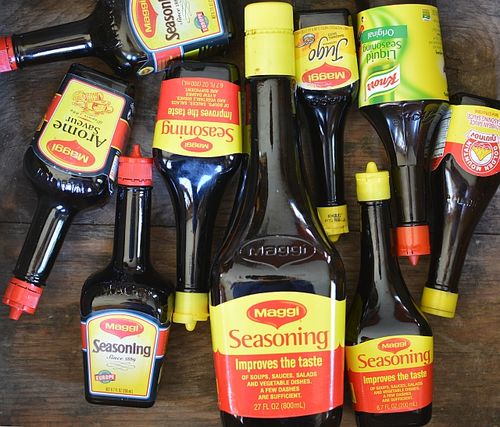
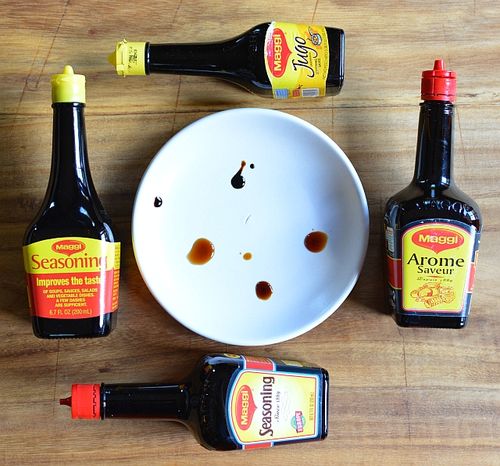
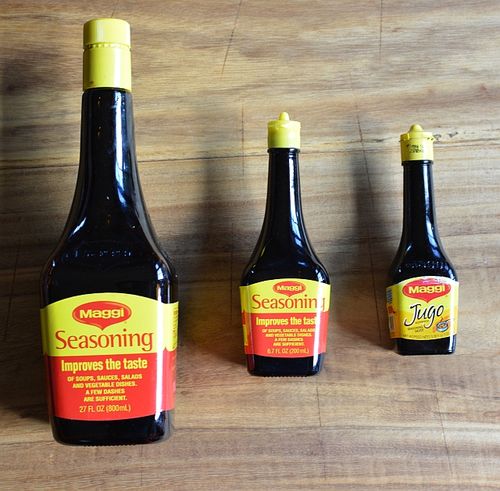
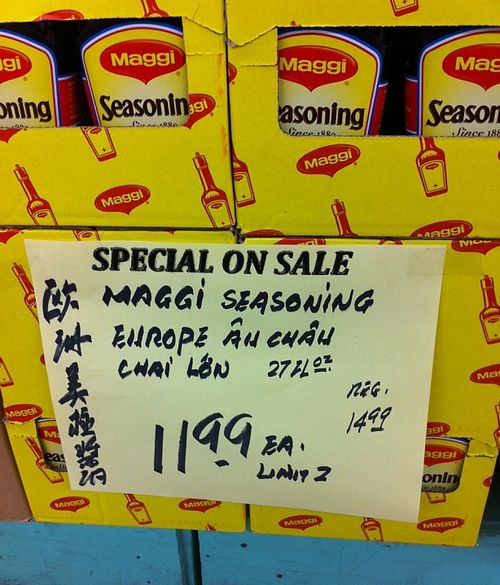
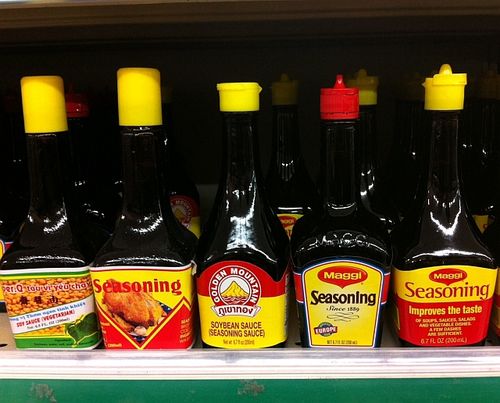
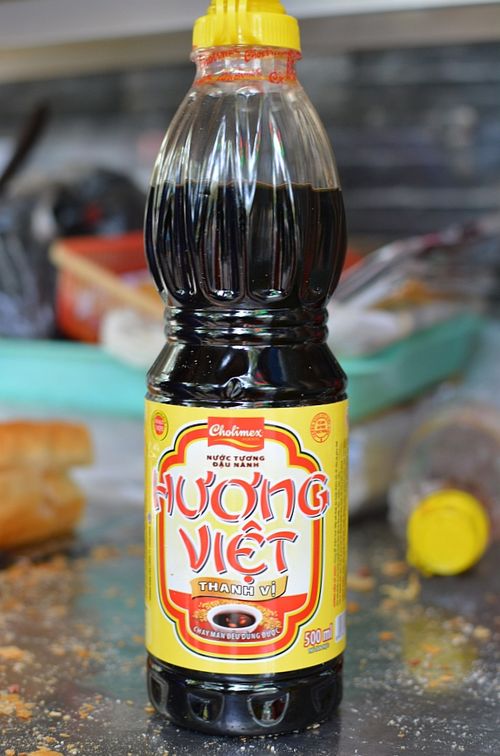

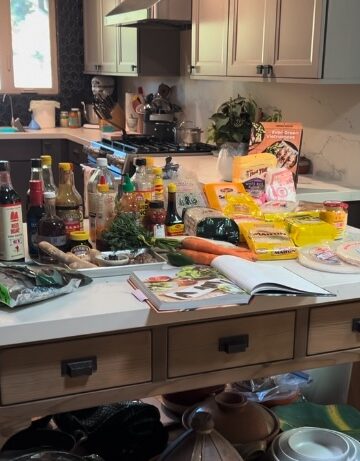
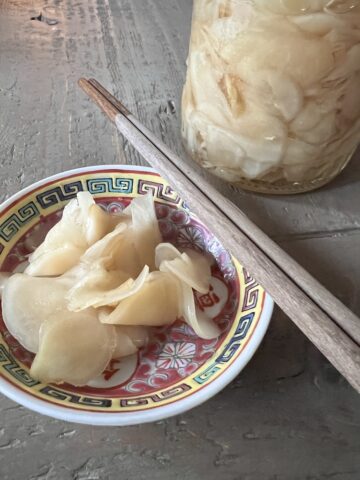
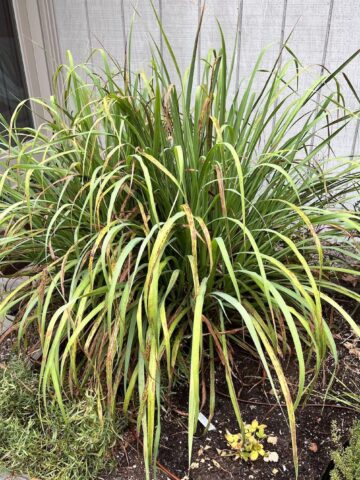
Patrick says
Hi Andrea,
Could you share some of your favourite recipes using Maggi seasoning?
Thanks!
Andrea Nguyen says
Great question! I most often use Maggi in banh mi sandwiches. I also sprinkle it onto rice and add a pat of butter. It's great sprinkled on a fried egg with a bunch of black pepper. I like to dip steamed bao it in. If you have my cookbook, "Into the Vietnamese Kitchen", there's are terrific pan-seared beef steak and garlicky roast chicken recipes in there that use Maggi as the primary seasoning. See pages 80 and 136. Your library may have the book. If not, Amazon surely does!
What do you use Maggi for?
Friedrich Vonostrowo says
Maggi (German version) was a staple in my mom's kitchen and she would add it to soups and gravies and sometimes she used the Maggie cubes. She bought the Oriental version once and traded it to her friend for the smaller size of the German version because she didn't like it and her friend said that it tasted fine. The Oriental version was also cheaper but German stuff is often more expensive and now it is more difficult to find as well.
Andrea Nguyen says
I love that story, Friedrich. Our palates get used to something and we can't easily let go of it. The Maggie Wurst is more intense than than the French version that Viet people adore. I have the wurst in my cupboard and use it sparingly since I can't replace the bottle easily. Thank you for taking time to write.
JoAnn says
What is the difference between Maggie seasoning and Maggie Arome
Andrea Nguyen says
The former is a generic term used in English and the latter is the French version. The former is robust tasting while the latter is a bit lighter, with MSG.